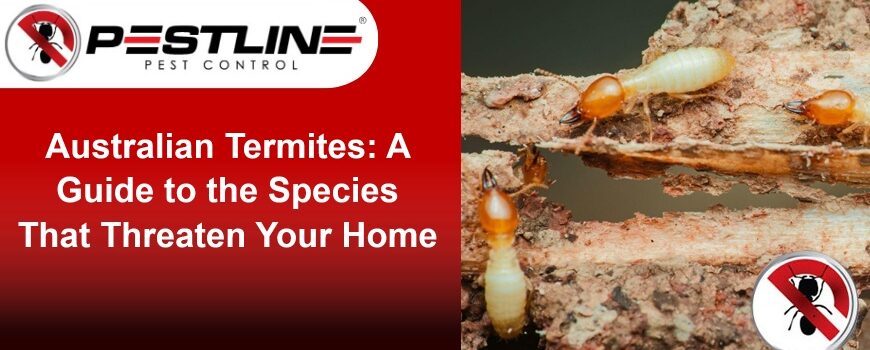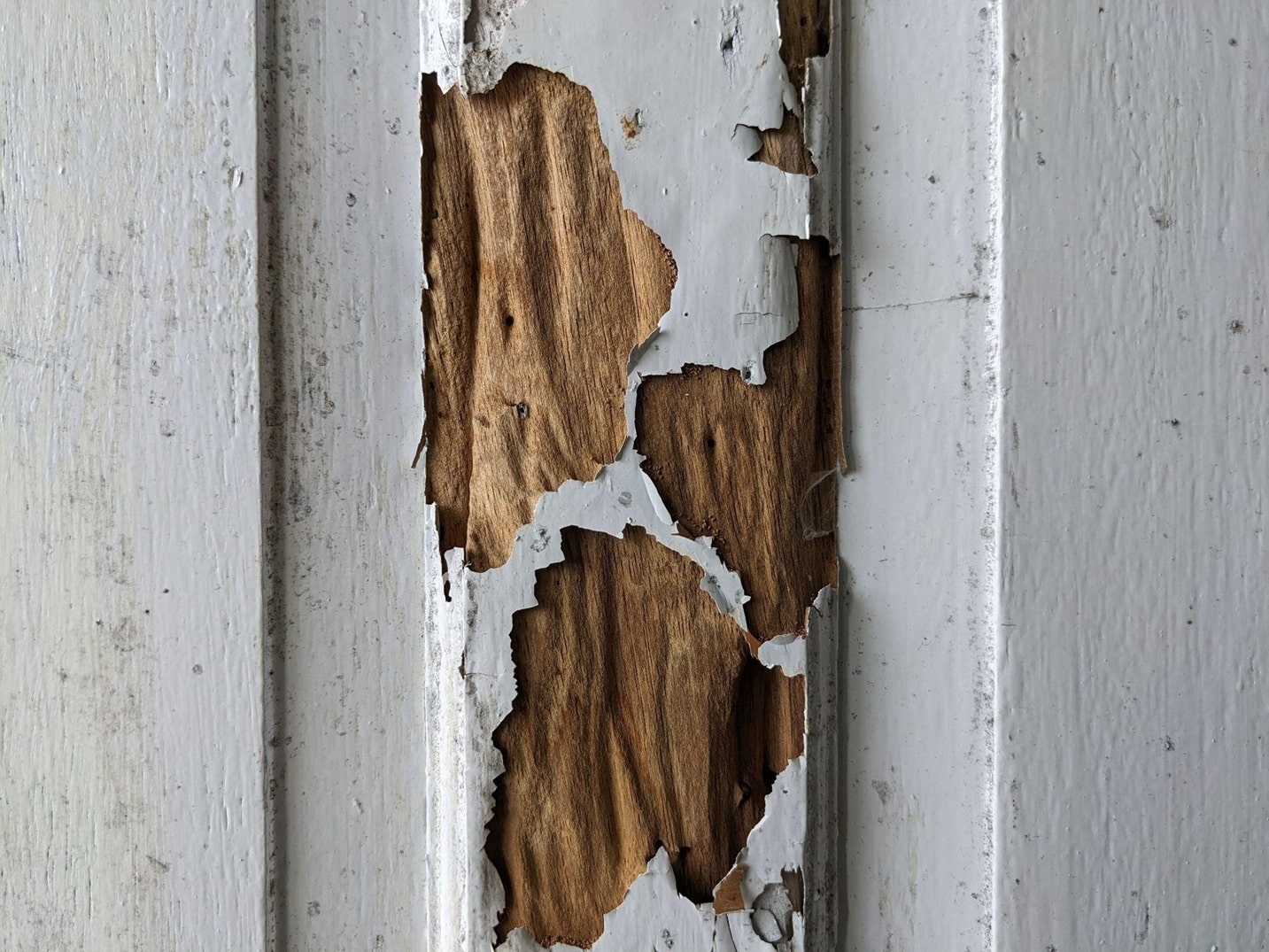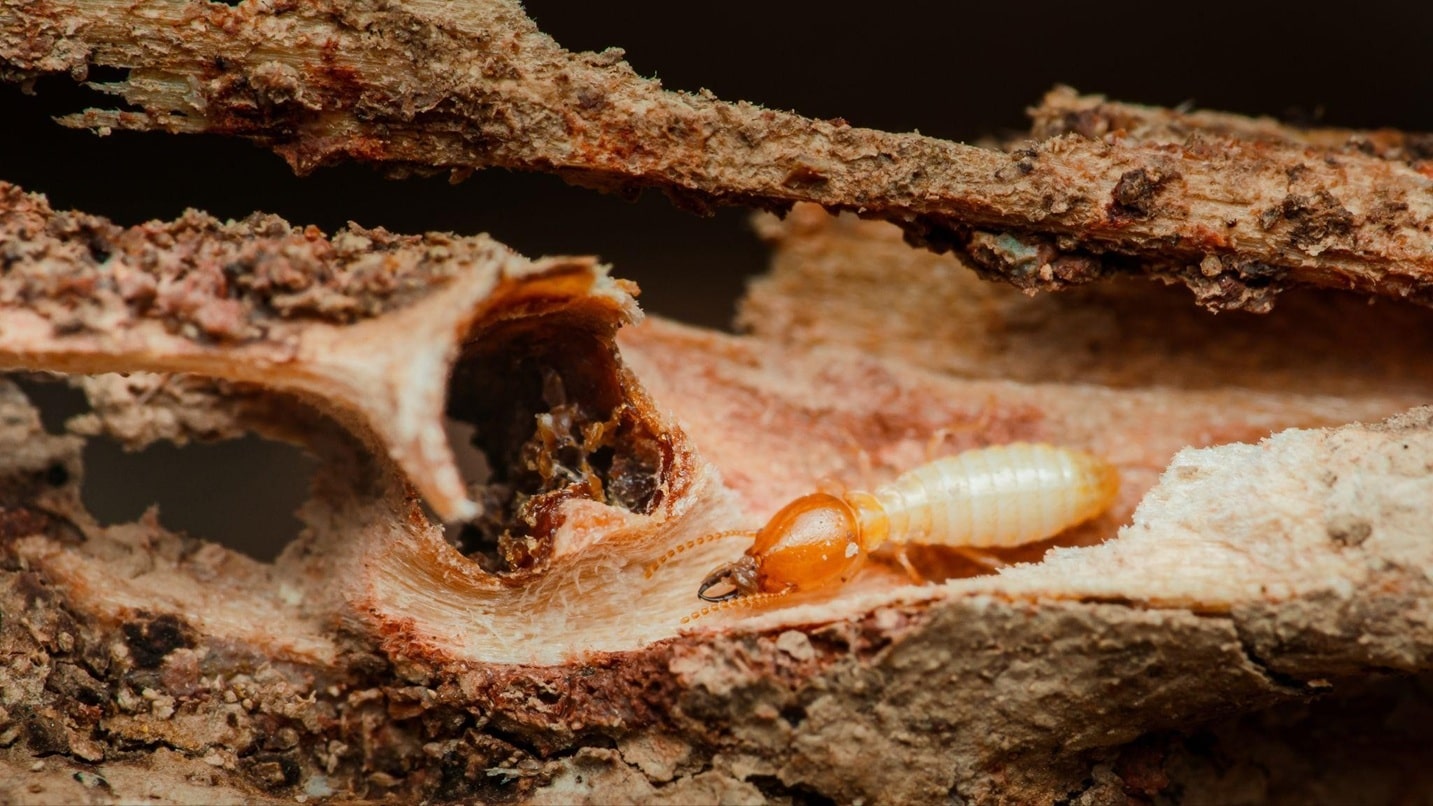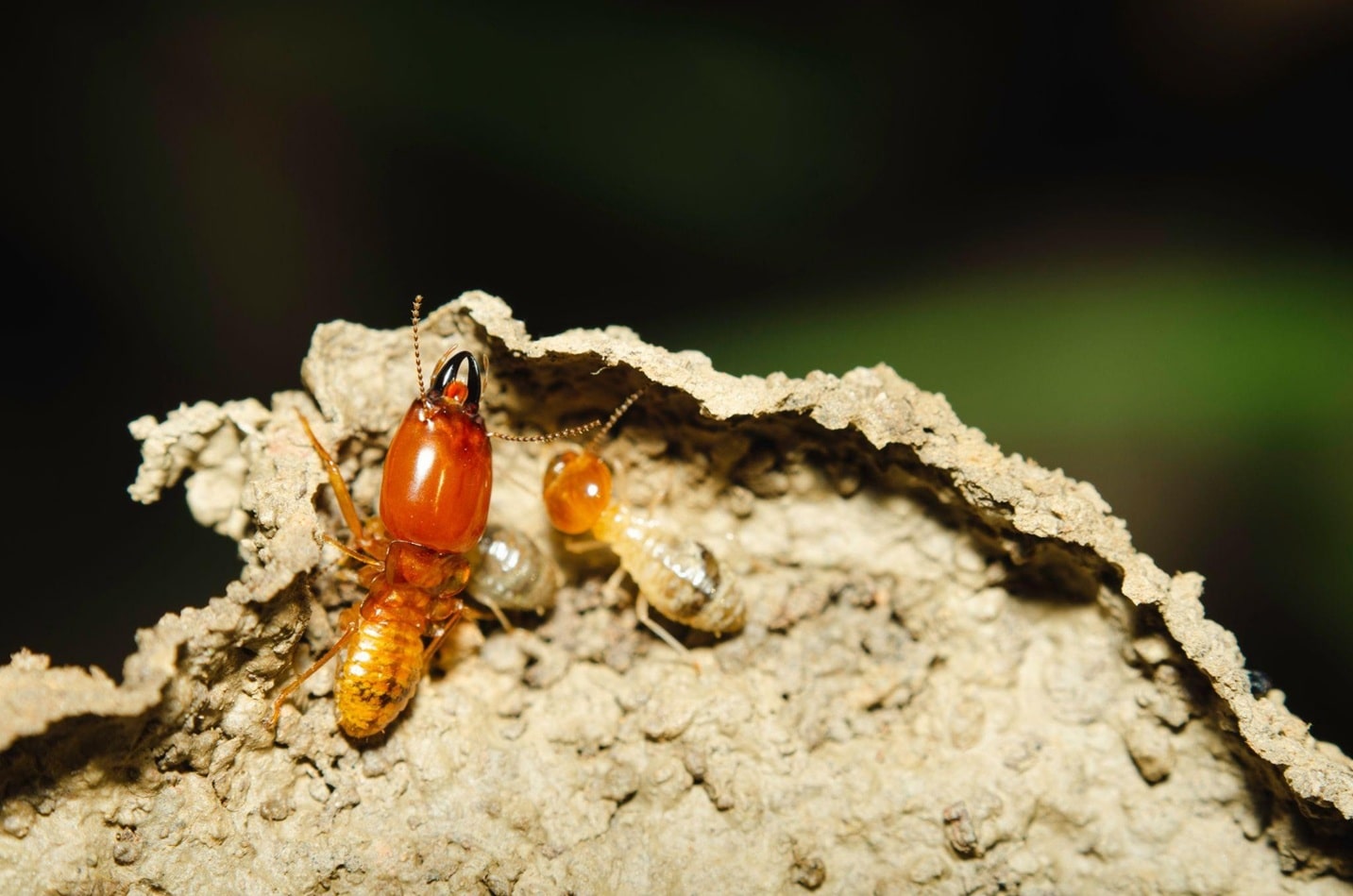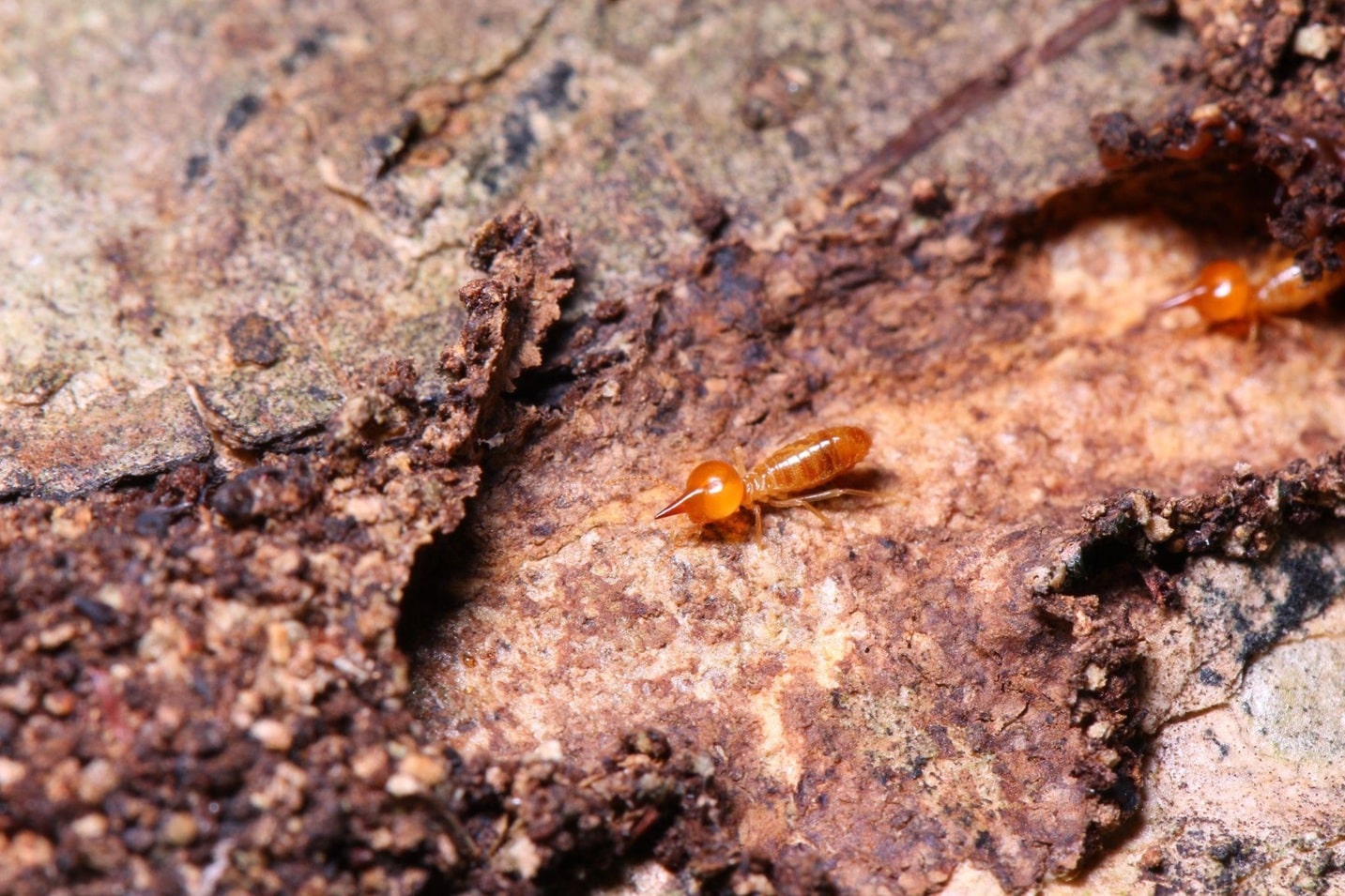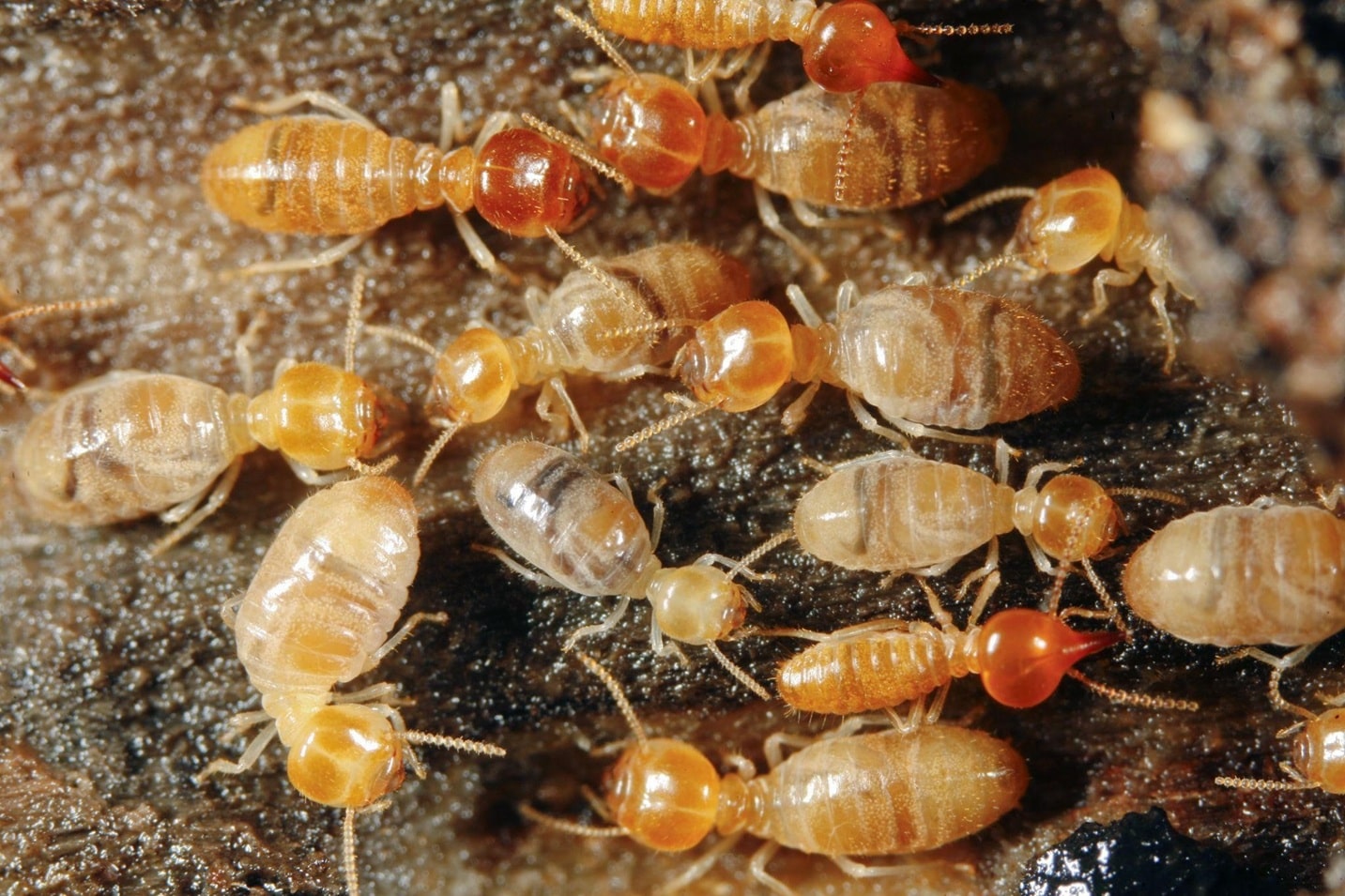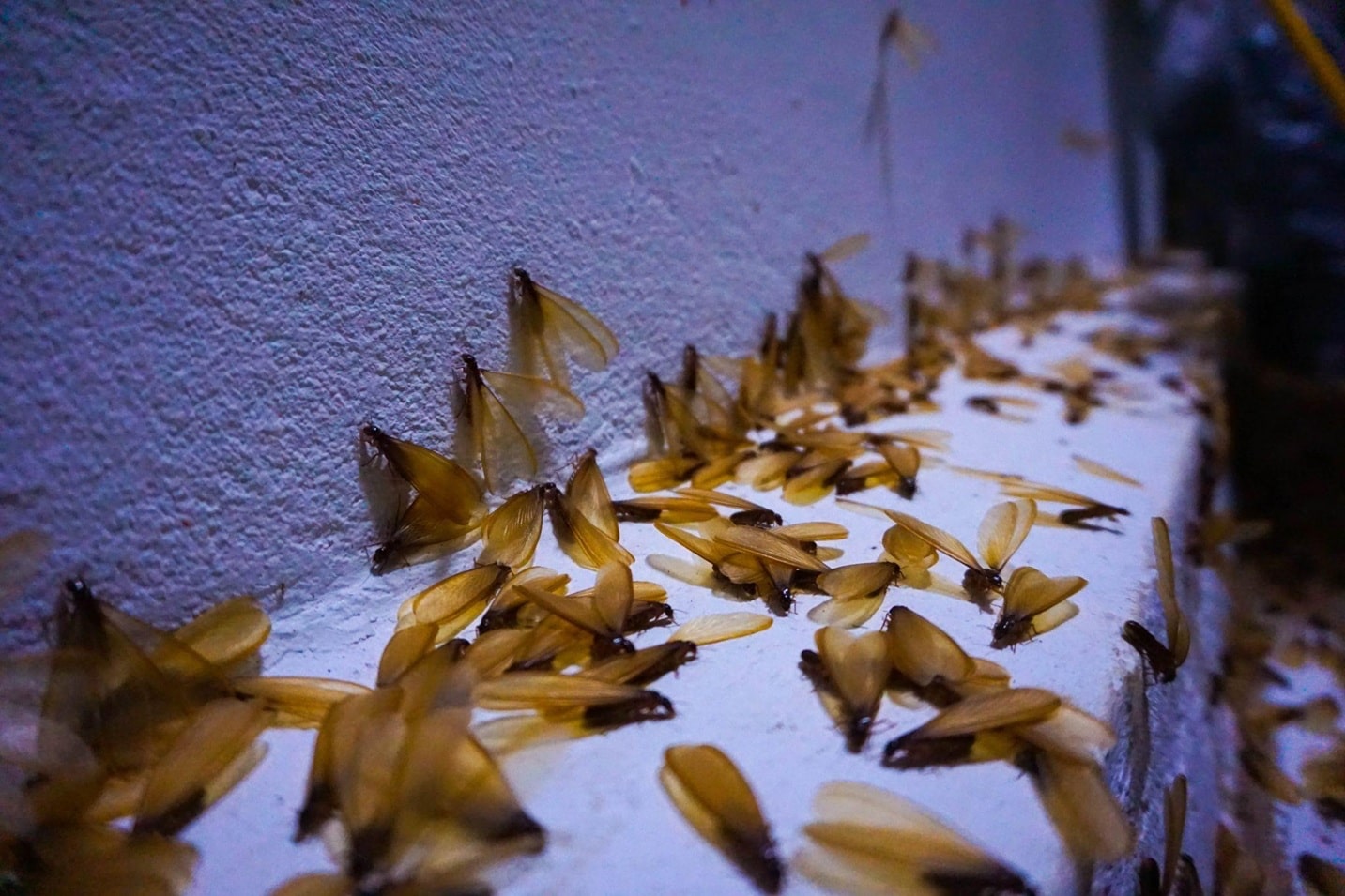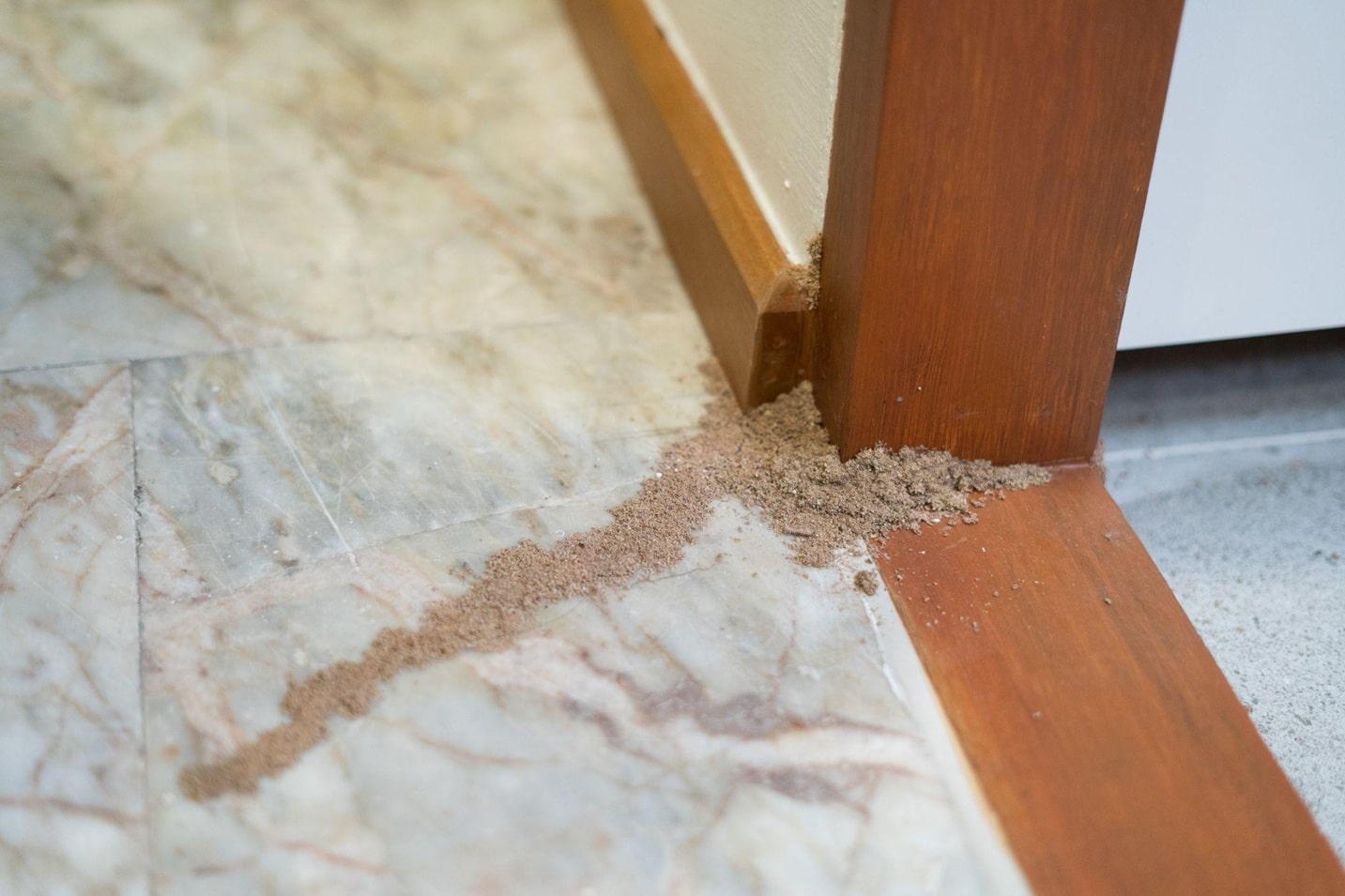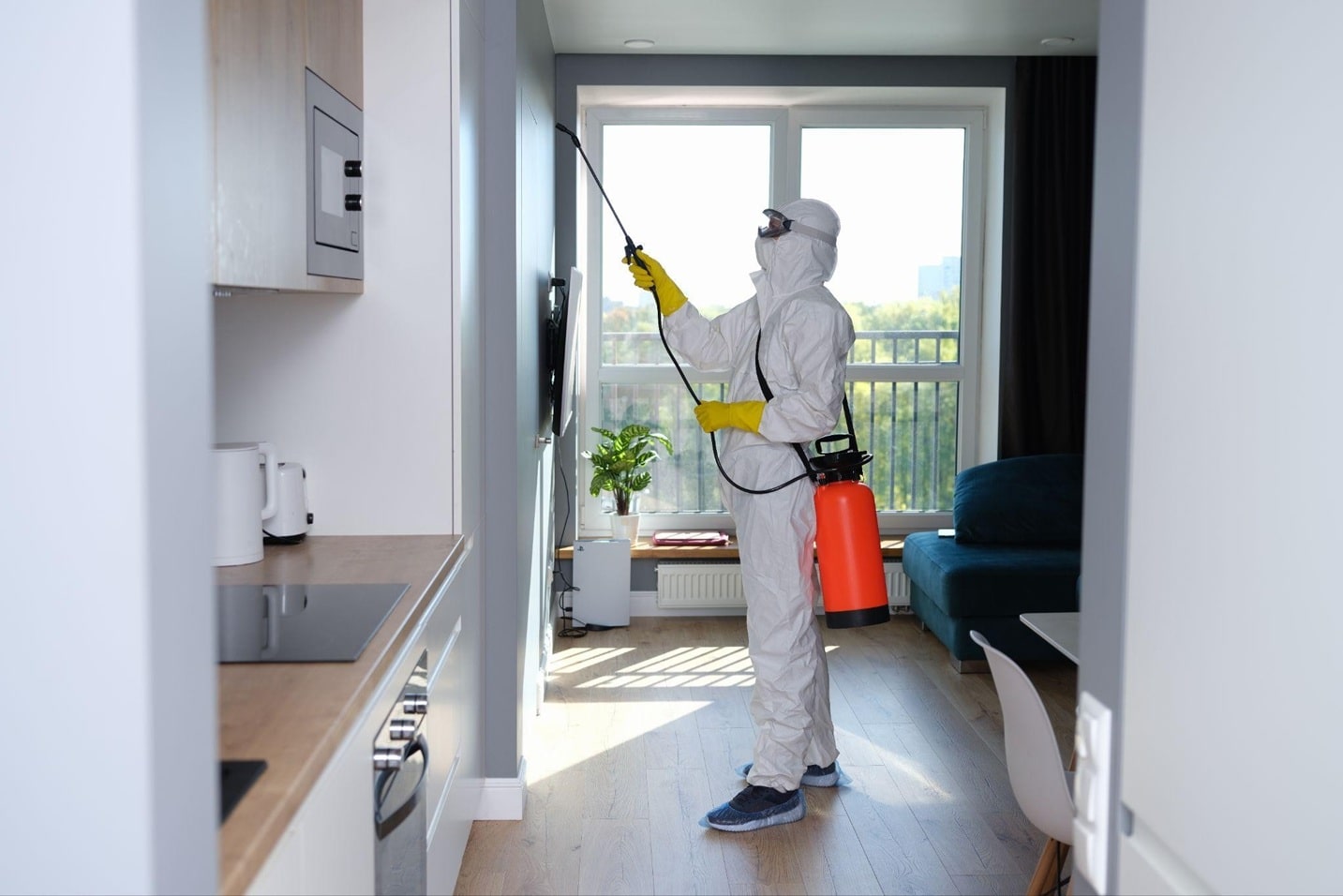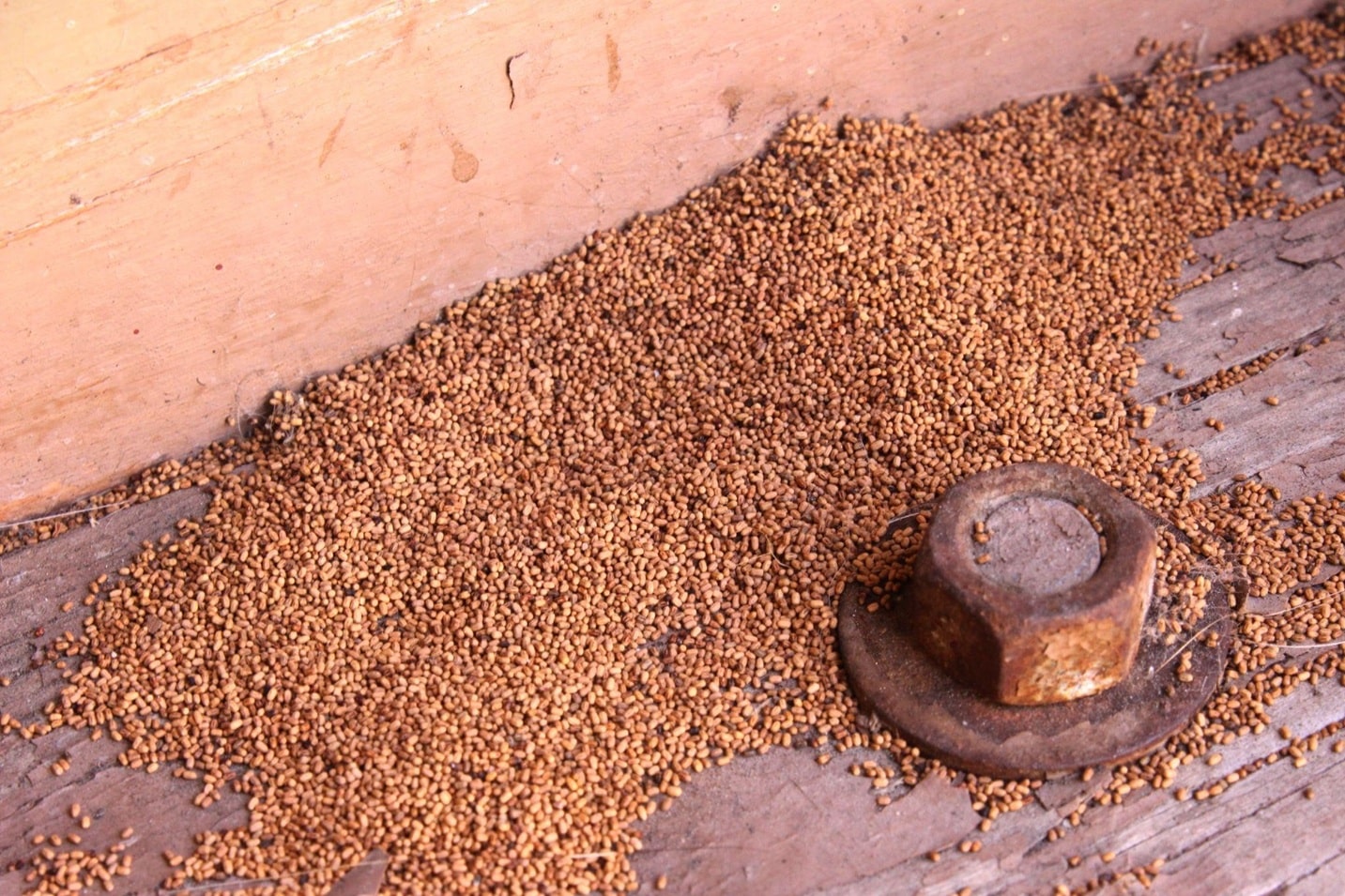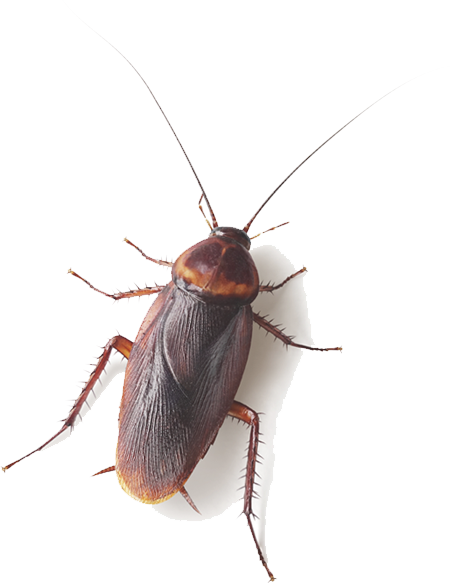Australian Termites: A Guide to the Species That Threaten Your Home
You might not notice until the damage is done: a few wings on a windowsill, a hollow-sounding skirting board or a door that suddenly doesn’t close right. By then, termites have usually had their way with your house. Inflicting millions of dollars of property damage each year in Australia, these tiny beasts don’t care if your home is an old cottage or a new build.
At Pestline, we understand how upsetting a termite infestation can be, whether you’re in a leafy suburb or on-site at a commercial property. There are more than one species of termite in Australia, and they all find a way in, usually before you ever notice them.
This is why our expert technicians provide fast, reliable termite inspections, treatments and prevention plans for domestic properties. We use advanced termite detection tools and customised pest management strategies to halt infestations in their tracks and keep them from recurring.
So, what are the most common termites that could be attracted to your home? Here’s a quick look at the main species in Australia, and what you need to know about them as a Melbourne property owner.
Table of Contents
- Why Termites Are a Serious Threat to Australian Properties
- Common Termite Species in Australia
- What Do Termites Look Like?
- Do Termites Fly? Understanding Flying Termites and Swarming Season
- Why Termites Target Certain Homes
- Termite Pest Control: Prevention and Treatment Options
- Suspect Termites? Here’s What to Do
- Protect Your Home with Pestline
Why Termites Are a Serious Threat to Australian Properties
Termites are the ultimate silent destroyers. For such tiny insects, they cause massive problems. Each year, they cause more structural damage to Australian homes than floods, fires and storms combined. And most of it isn’t covered by insurance. What makes them so destructive is how quietly they work. Termites don’t come knocking on your door or leave obvious signs of their presence. They remain hidden behind walls, floors and foundations, chewing through the wood that keeps your property standing strong.
Termites feast on cellulose, the stuff of timber, paper and some kinds of insulation. Once they’ve found a reliable food source, a colony can chew through structural timber 24 hours a day, 7 days a week. Over time, that activity can weaken floors, door frames, skirting boards and support beams. You might eventually notice sagging floors, hollow-sounding walls, or doors that suddenly jam, but by then, much of the damage is already done.
If you suspect you have a termite problem, it’s important to catch it early. But termites are masters of stealth. So what are some of the warning signs to look out for? Look for subtle signs like:
- Mud tunnels along foundations or walls
- Piles of discarded wings near windows or lights
- Blistering paint or soft patches in timber
- Tight-fitting doors or windows that once moved freely
Notice any one of these signs and there’s a good chance there’s an active colony nearby — and that’s when it’s time to call the professionals.
Common Termite Species in Australia
Australia has many species of termite, but they do not all behave the same. Some subsist quietly in the soil, coming to the surface only to swarm; others attack timber directly and can quickly damage your property if not controlled. Identifying the species most likely to attack your home or business premises (and understanding their behaviour) is the first step in protecting your property.
In this section, we will discuss the key species of termite across Australia, including the most common types found in Melbourne homes and businesses.
Subterranean Termites: The Hidden Destroyers
Subterranean termites are the most common and destructive species of termite found in Australia. These termites live in the soil and require moisture to survive, building extensive networks of tunnels to reach timber and other cellulose-based materials. There are many species of subterranean termites in Australia, but the most common species found in Australian homes include Coptotermes, Schedorhinotermes and Heterotermes.
Coptotermes species are particularly aggressive and widespread, and they are responsible for the majority of structural damage caused by termites in Australia. These termites are attracted to damp wood and can travel large distances from their nests through underground tunnels, making infestations difficult to detect. They are commonly found in Queensland, New South Wales, Victoria and parts of Western Australia, and can be found in both urban and rural environments.
Schedorhinotermes species are more localised, often found in Queensland and northern New South Wales, and tend to target timber that is softer or already damp. Heterotermes are less common but can be found in southern Queensland and northern New South Wales, and are known to target softer, decayed timber and are often found in areas with higher soil moisture.
While there are some differences in the behaviour and preferences of these subterranean termite species, they all share some common behavioural traits. They all build mud tubes to maintain moisture while travelling, feed on cellulose and can remain hidden for months or years. Understanding the most common subterranean termite species found in your area can help you predict which areas of your home are most at risk of infestation and how quickly damage may occur.
Drywood Termites: Silent Invaders of Furniture and Frames
Drywood termites don’t need contact with the soil to survive and live inside the wood they are eating. There are many different species, the most common in Australian homes are Incisitermes, Cryptotermes and Neotermes.
Incisitermes species are found throughout Queensland, New South Wales and northern Victoria. Common species will infest furniture, structural timber and window frames. They can tolerate quite dry conditions and produce small piles of faecal pellets, which are often the first thing you will see from an infestation.
Cryptotermes species are much smaller and are found in coastal Queensland and New South Wales. They prefer timber that is already dry or treated timber such as imported timber or older furniture. Neotermes are uncommon but do occur in the tropical and subtropical areas of northern Queensland. They feed on structural timber and fallen trees.
Drywood termites all behave in a similar way, they live completely inside the wood eating and forming galleries and the colony slowly increases in size. Furniture, floorboards, and roof timbers can all be infested with no direct contact to the soil. This is how they often go undetected until signs of damage are visible or swarmers appear.
Dampwood Termites: Attracted to Moisture and Decay
Dampwood termites are a group of termite species that, as their name implies, favour high moisture content wood. Three of the most common species are Mastotermes, Porotermes and Amitermes and they have some behavioural and habitat differences.
The Mastotermes are the largest and most aggressive of the dampwood termites, found in tropical northern Queensland. They will consume damp or rotting timber and can quickly destroy structural timbers where leaks or moisture problems exist. The Porotermes species are found in the south-east, along southern Queensland and New South Wales. They are found in damp timber of roofs or wall cavities, as well as fallen trees or timber on the ground. Amitermes are found in large numbers over arid and semi-arid areas but usually prefer softer, decaying wood, which has absorbed moisture after rain.
Dampwood termites tend not to build the same extensive network of tunnels as the subterranean species, and instead nest directly in moist or rotting timber or logs. This makes them more seasonal and infestations are often a sign of water or drainage problems within a home.
Termites in Melbourne: What Local Homeowners Should Know
One common misconception about termites is that they do not come out or slow down during winter. If you are located in Melbourne, termites are quite hardy and don’t stop for the cooler months. Subterranean termites can survive winter as they live in the ground which stays at a relatively constant temperature. Termite colonies continue to grow and they will still be consuming timber and building their nests, regardless of the outdoor temperature.
Drywood and dampwood termites are also still active during winter. Drywood termites are completely sheltered by the timber they live in, and the dampwood termite seeks out moist timber that is protected in roof cavities or has other cover, and rots to a high moisture content during winter months too. Since termite activity and damage in your home will be quite slow, you might not realise you have a termite problem until the situation is well and truly established.
Melbourne homeowners have no choice but to stay on top of termite activity year-round, with regular termite inspections and monitoring to keep any incursions at bay.
What Do Termites Look Like?
Termites are small insects, but knowing what they look like is important to help identify an infestation early on. Most homeowners first learn what termites look like when they notice flying adults during swarming season, see shed wings, or come across signs of damage. However, learning to spot termites outside of swarming season will help homeowners to identify them long before major damage is present.
Termites differ in appearance from ants with their soft, pale bodies (usually light brown, cream, or white in colour) and rounded heads. Their waists are straight, instead of pinched as in ants.
There are a few main groups that we come across the most:
- Worker termites have a pale, soft body and feed other members of the colony. Workers will often be seen within mud tubes or inside timber quietly chewing away.
- Soldiers are a little larger, have darker, elongated heads and strong mandibles, and are in charge of protecting the colony.
- Reproductive termites (Alates) are the winged termites that swarm to create new colonies. Darker in colour, they have two pairs of long, equal-length wings.
Flying termites, or alates, are one of the most common things mistaken for ants. Both alates and winged ants swarm during the same season, so it can be difficult to tell the difference. But there are a few key ways to tell them apart. Termite wings are equal in size and are long in proportion to their bodies. Termites’ bodies are straight-waisted, and their antennae are straight or very slightly curved, unlike ants, which have an elbowed antennae.
Do Termites Fly? Understanding Flying Termites and Swarming Season
Termite swarmers are often referred to as ‘winged termites’ due to the fact that a number of termites in a colony will grow wings and fly away from their nests to establish new colonies. Flying termites inside the home are the first stage of termite infestation that you may be able to spot. If you see them, it means that your wood or cellulose materials are at immediate risk, and depending on the size of the swarm, can indicate the presence of many thousands of termites silently feeding inside your walls, floors or roof timbers.
The most common time to spot termite swarms in Melbourne is in the spring and early summer months following a period of warm humid weather. In Melbourne, the most common type of termites to swarm are subterranean termites, however, drywood and dampwood termite swarms are possible during the later months and often in more sheltered environments. In general, around Australia, areas further north such as tropical northern Queensland tend to have swarms year-round, while those further south in states such as Victoria and New South Wales, have more seasonally active swarms.
When flying termites are spotted inside your home, it is crucial that you act fast. Collect a sample if possible, and call out the professionals for an inspection. Pestline will assess the level of activity and act to provide an effective treatment to keep your property safe all year round.
Why Termites Target Certain Homes
Termites can be opportunistic and are likely to target houses that offer them easy access to food and other attractive living conditions. For instance, moisture is a major contributing factor and can be present in the form of damp timber, leaky roofs, ill-drained gardens and plumbing leaks. These all create a conducive living environment for subterranean and dampwood termites, so it’s important that such issues are avoided.
Timber, as their main source of food, is of particular interest to termites. Houses with untreated or older timber, hollow timber beams, and furniture that has direct contact with the ground are therefore particularly vulnerable. In addition to this, small cracks in foundations, gaps around doors and windows, and other small entry points can make it easier for termites to infiltrate a property and gain access to food sources without detection.
Mulch, garden beds that help to retain moisture, or wooden retaining walls can all provide a direct pathway from the soil to the timber. Some building materials and poorly ventilated subfloors can also create a desirable living environment for termites, allowing for their colonies to establish and grow without attracting too much attention. For these reasons, termites are some of the most common household pests, and are capable of causing quite a bit of damage before homeowners even realise there’s a problem.
Termite Pest Control: Prevention and Treatment Options
We never want you to be in a position where you have termites and find this out because you see damage already happening. Instead, Pestline can provide protection services which includes regular inspections by our trained technicians with specialised tools to detect and monitor hidden colonies, termite activity, and risk areas before they turn into full-blown infestations. We also offer prevention and long-term termite management services designed to keep your home or business termite-free in the long run.
Chemical and physical barriers for termite prevention usually go hand-in-hand. Chemical treatments help create a barrier zone around your property to deter termites from entering, while physical barriers like stainless steel mesh or concrete shielding can offer additional protection. By using both methods, Pestline can protect your property from subterranean and drywood termites.
Termite management is an ongoing process that involves more than just a one-time treatment. Properties are unique and require regular monitoring, maintenance, and proactive measures to ensure termites are kept away for the long haul. Pestline tailors management plans for each property type, location, and risk factors. We offer you proactive solutions so that you can stay ahead of the game when it comes to these destructive pests.
With professional termite pest control and management from Pestline, you can rest easy knowing that termites are under control.
Suspect Termites? Here’s What to Do
If you think you have termites at your home or business, it’s critical that you act quickly. The worst thing you can do is attempt to solve the issue on your own. Trying to treat your home or business yourself will usually not get rid of the colony.
DIY treatments usually don’t reach the more secluded areas of your home or business, and the colony will continue to grow, potentially doing much more damage to your property. Termites are the master of remaining hidden, and without specialised equipment and the right know-how, there’s no way you’ll be able to treat your property yourself.
It’s far better to take the right steps to avoid termite damage than to attempt to deal with it after it’s taken hold. Setting up an annual pest management program that includes inspections and monitoring can identify early termite activity and ensure that an infestation doesn’t take root on your property. Scheduling regular termite inspections at key times during the year, particularly in the months following the spring swarming period, ensures your home is protected year-round.
At Pestline, we also offer construction pest control. This helps builders and developers protect their new projects from termite damage before it even occurs.
If you’re a homeowner or business owner in Melbourne, the best thing you can do is to call in the experts. Pestline will ensure your property is thoroughly inspected and treated if necessary, and you can have peace of mind knowing that your property is termite-free.
Protect Your Home with Pestline
Termites don’t need to sneak up on you. With the right prevention plan in place you can stay one step ahead of any damage. At Pestline, our team of local experts are on hand to help with professional termite inspections and customised pest control solutions for homes and businesses all around Melbourne and the suburbs. From inner-city to outer suburbs, we’re familiar with the different risks every neighbourhood faces, and use effective, proven solutions to keep your property protected.
A professional termite inspection is the best way to ensure long-term safety and peace of mind. If you need assistance with other pests as well, we can help with that too. Pestline can provide full pest control for common intruders like mice, possums, ants, and more.
Trust Pestline for all your inspection and prevention needs and know that every part of your property is under a watchful eye and protected by experienced, local specialists.
Get in touch today to arrange an inspection or discuss a tailored pest management plan — and start keeping your Melbourne property safe from termites and other pests before it’s too late.

